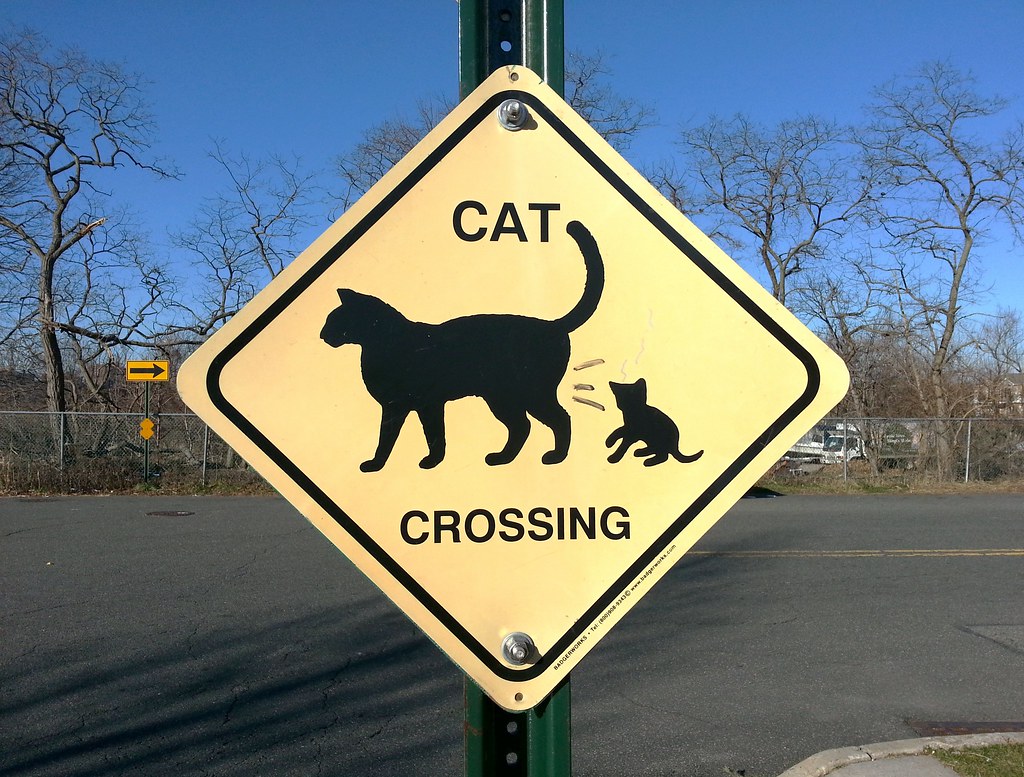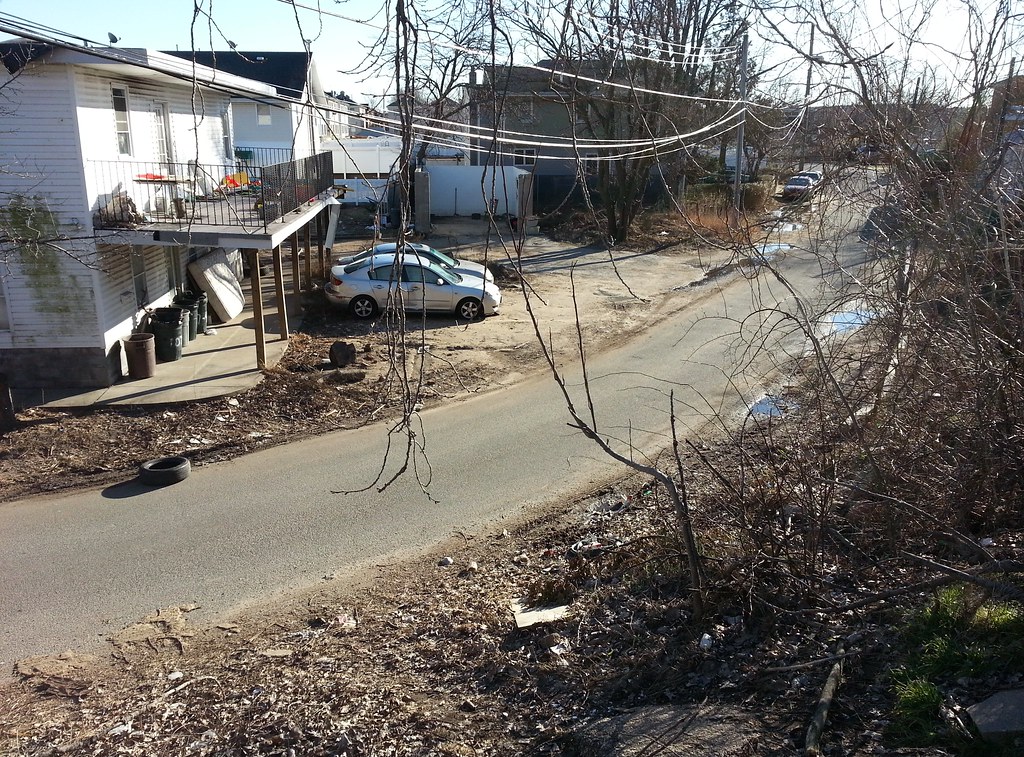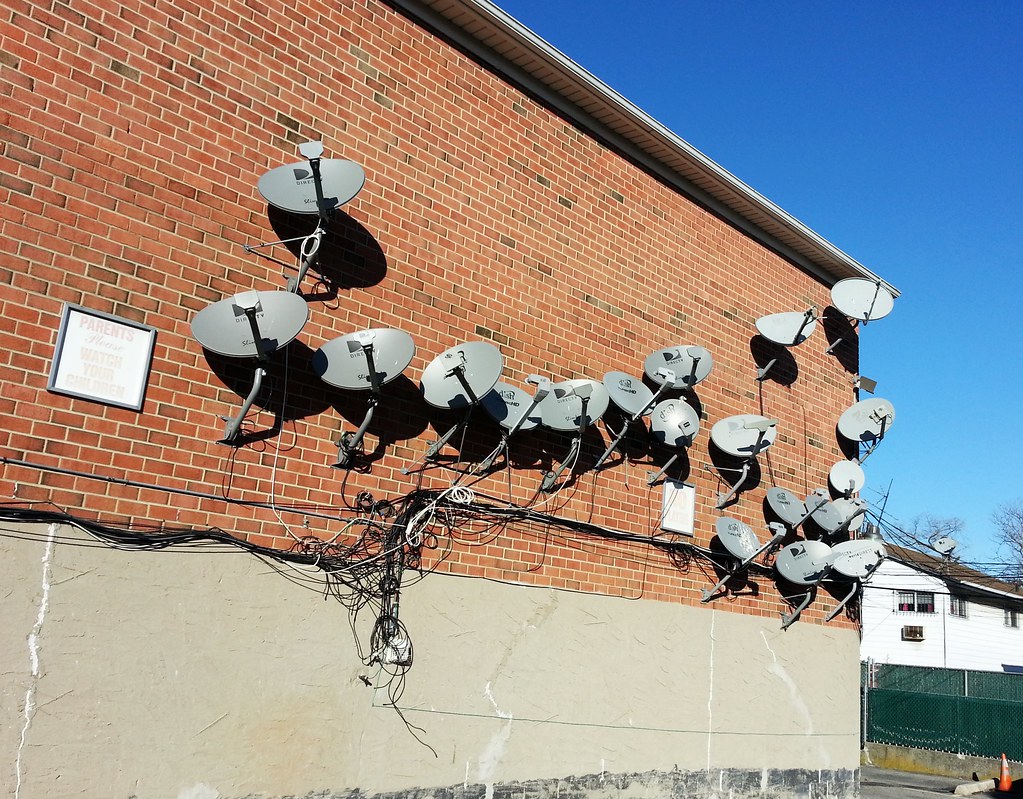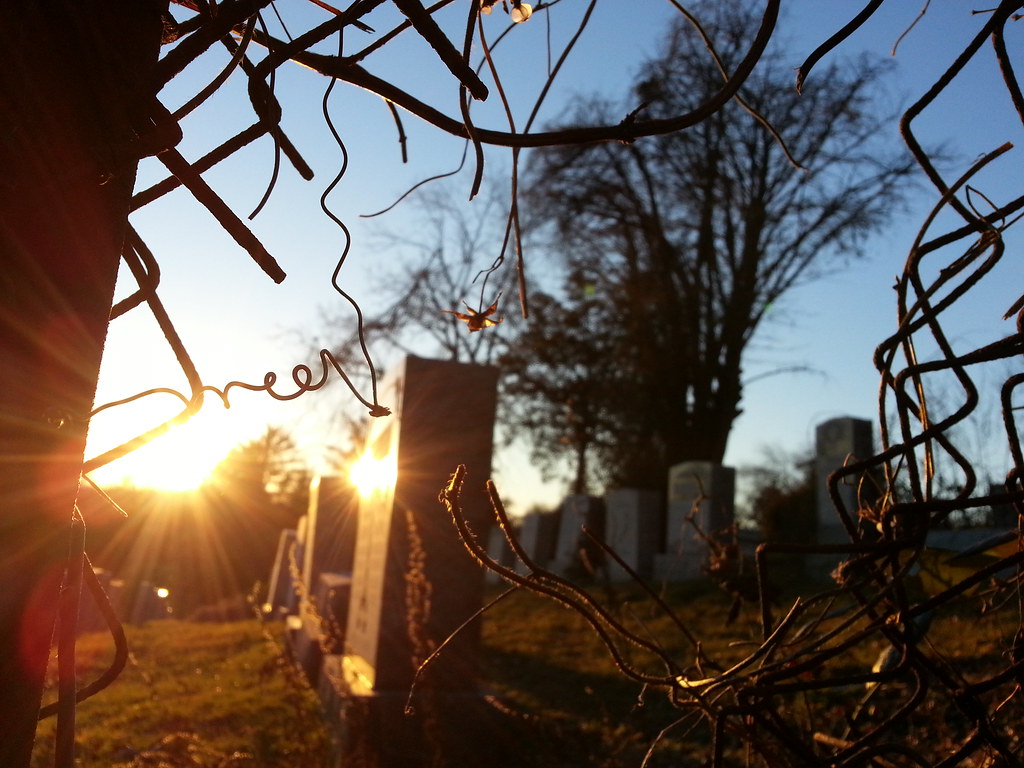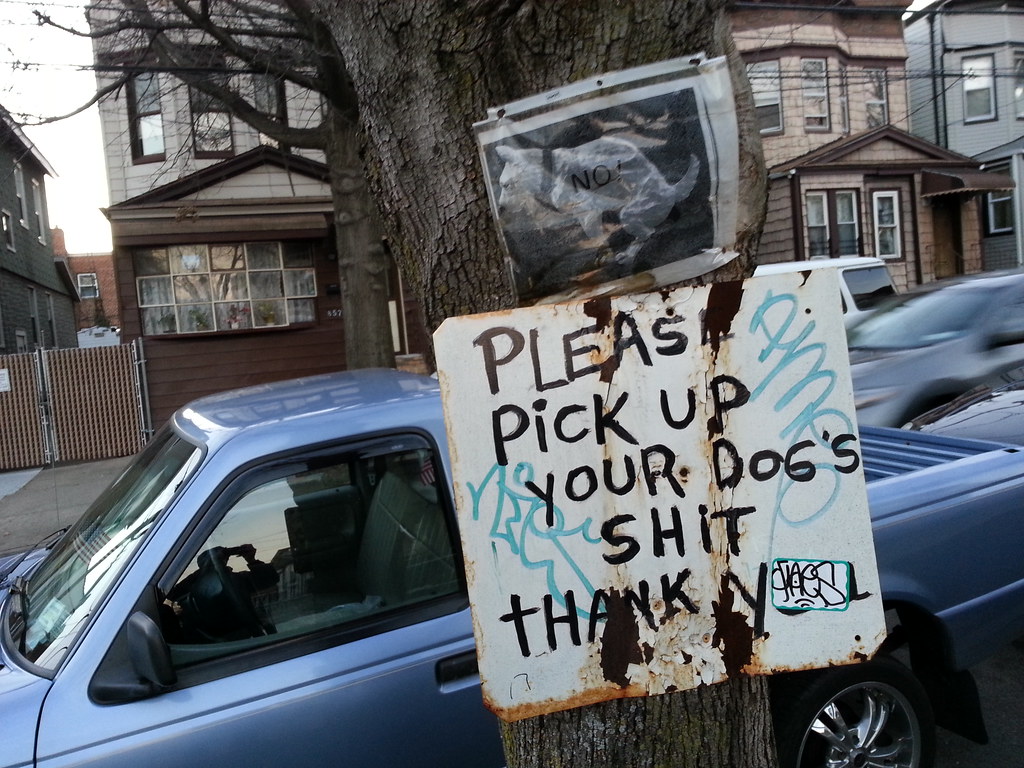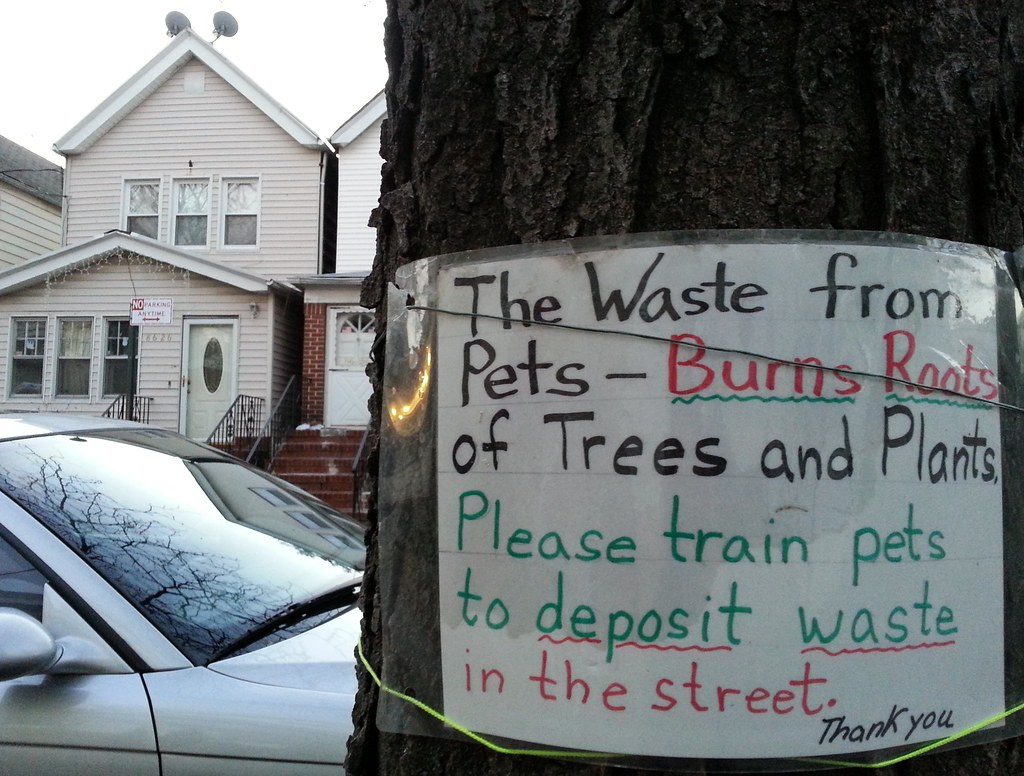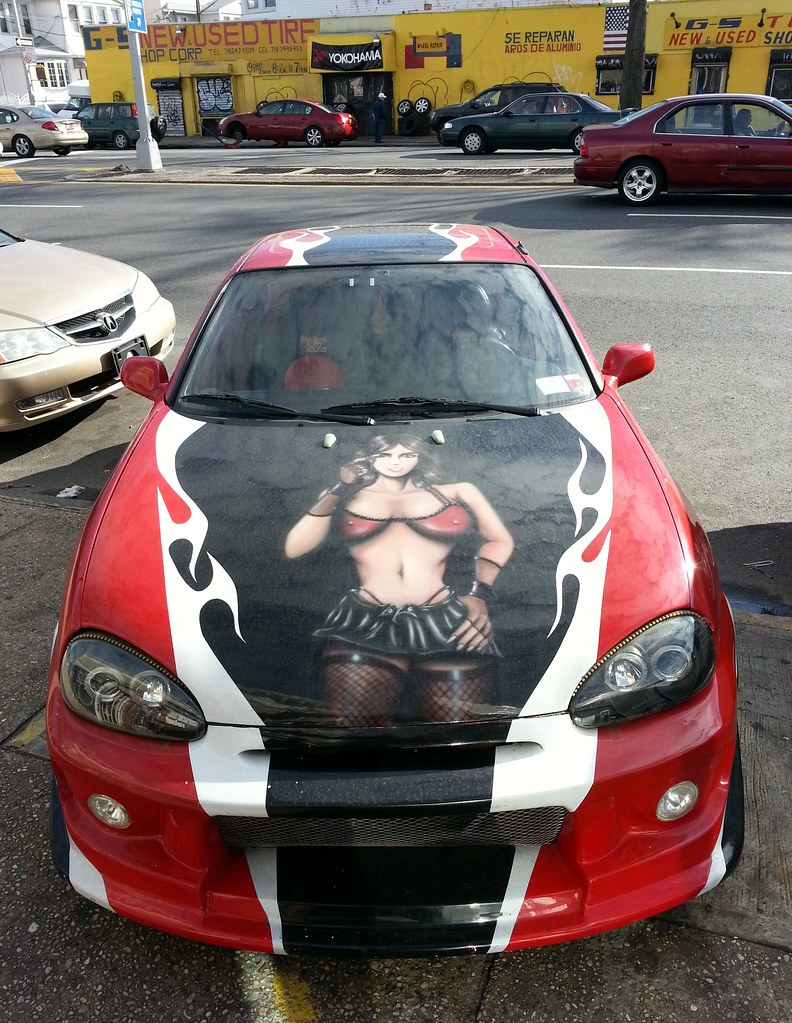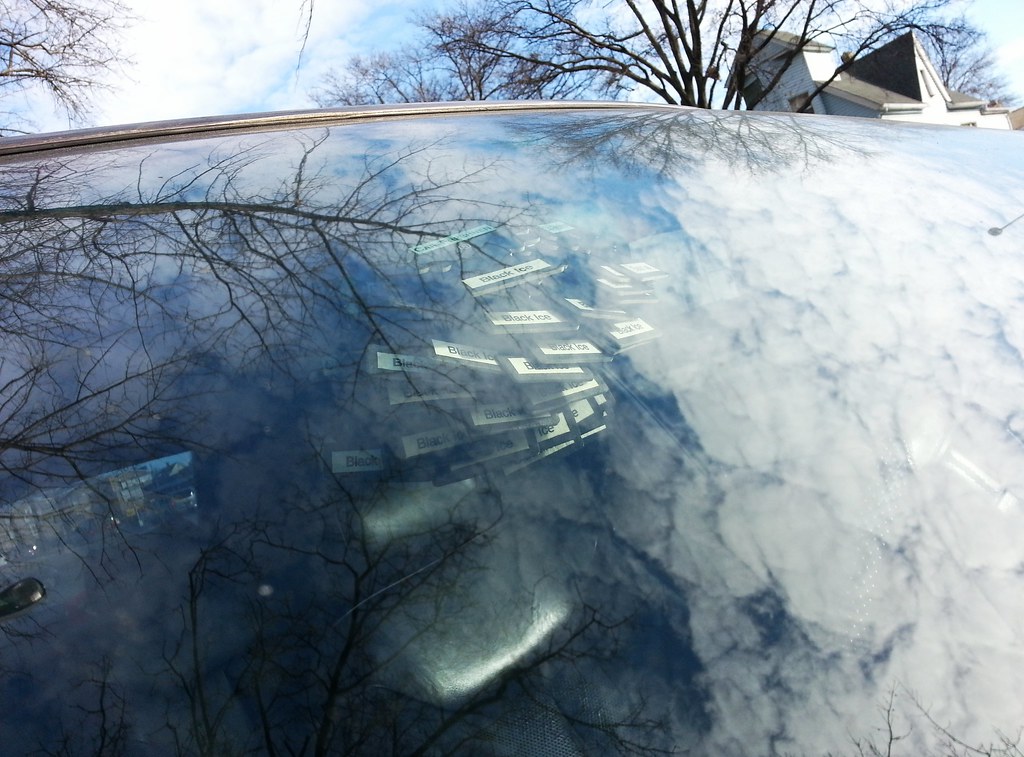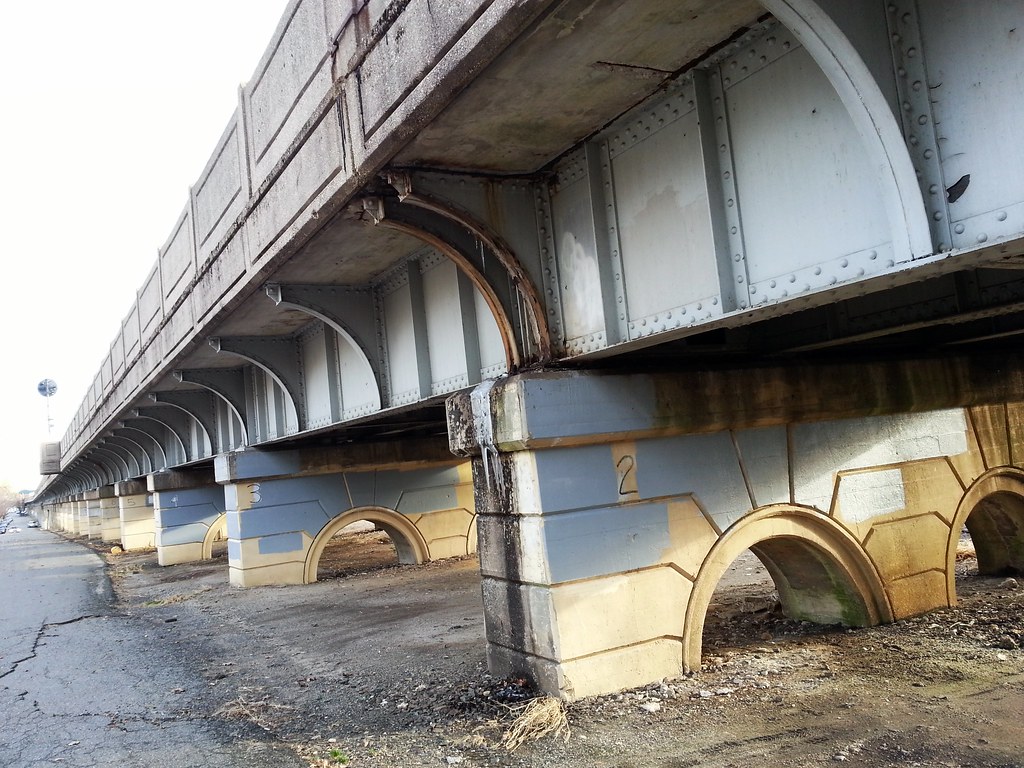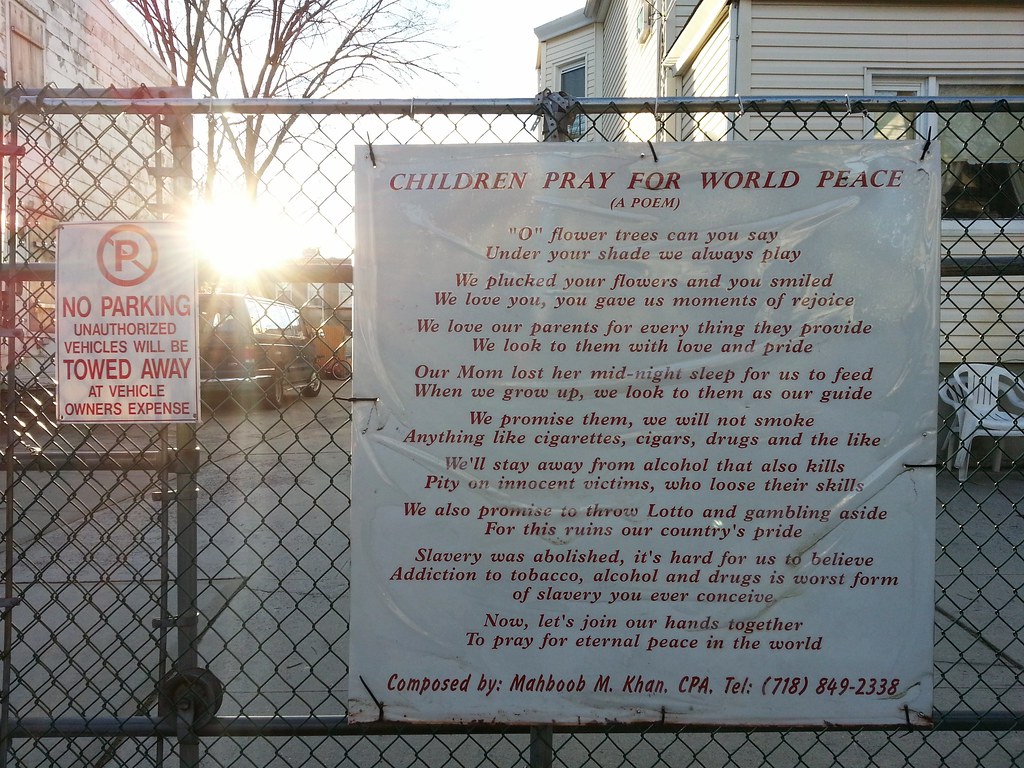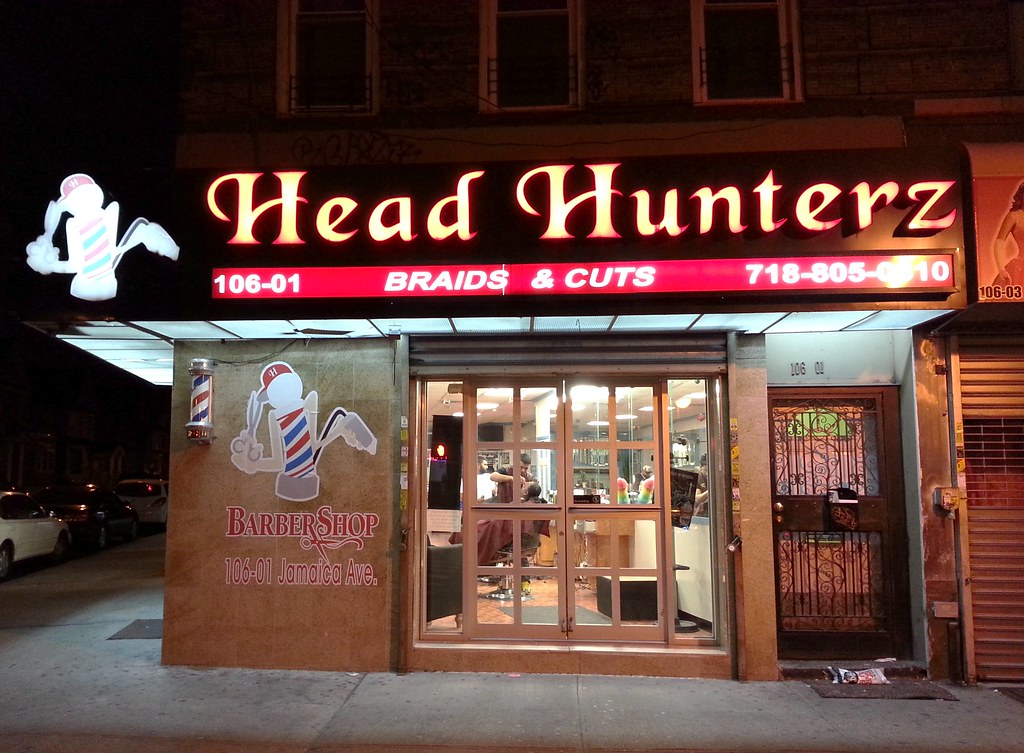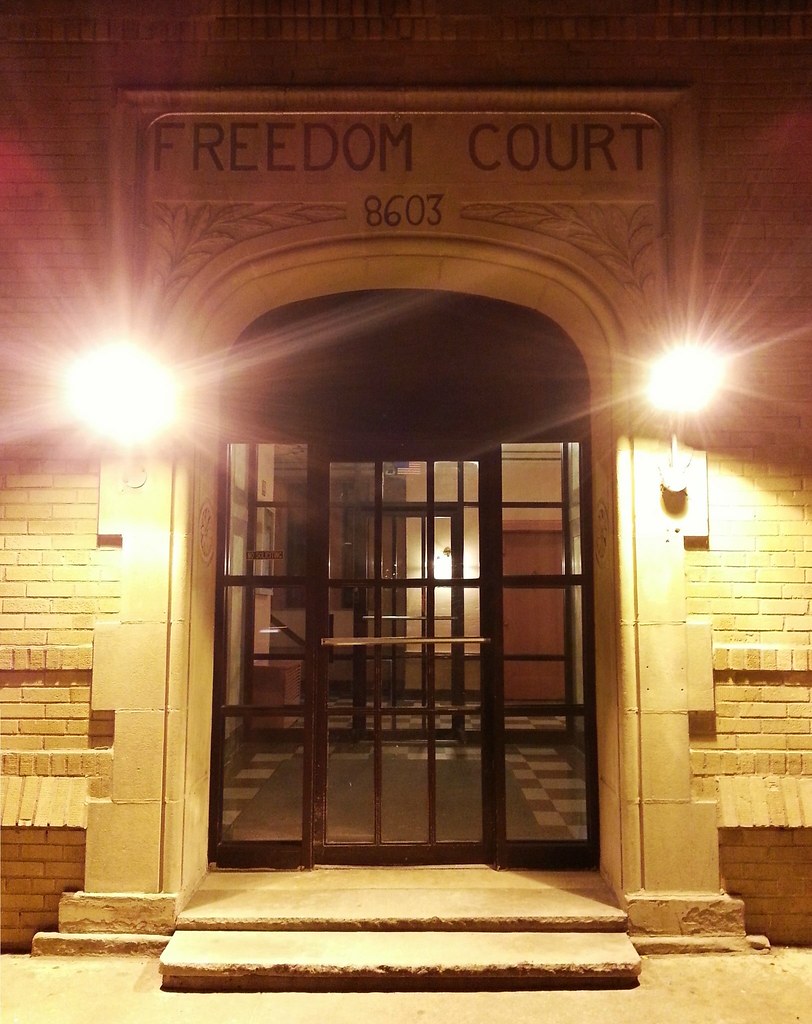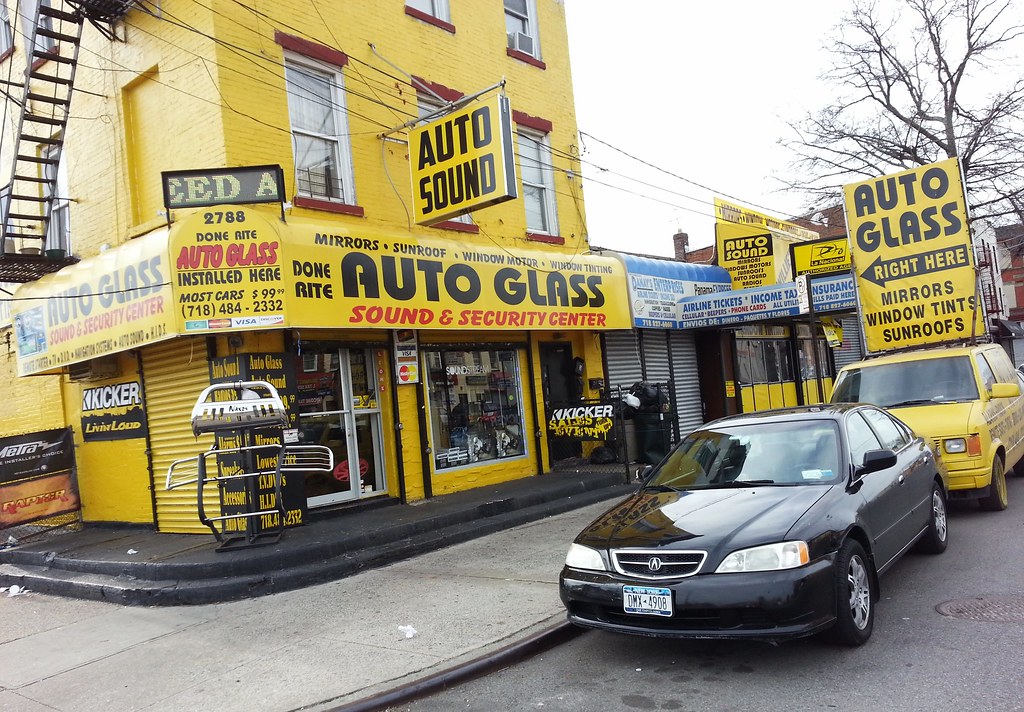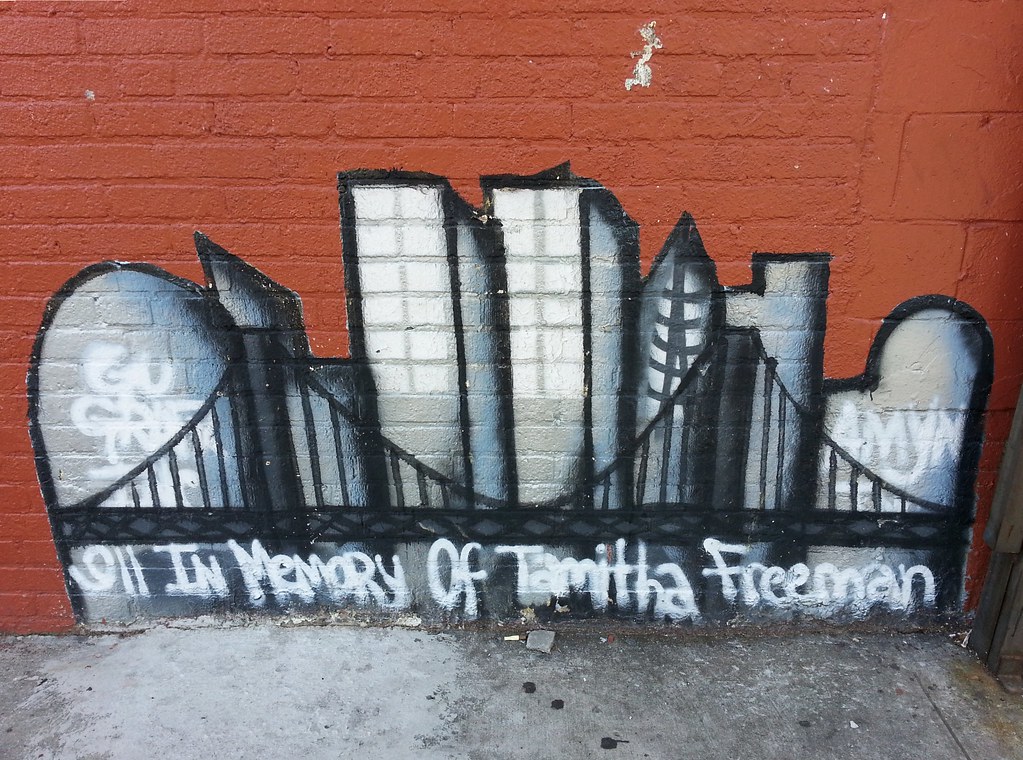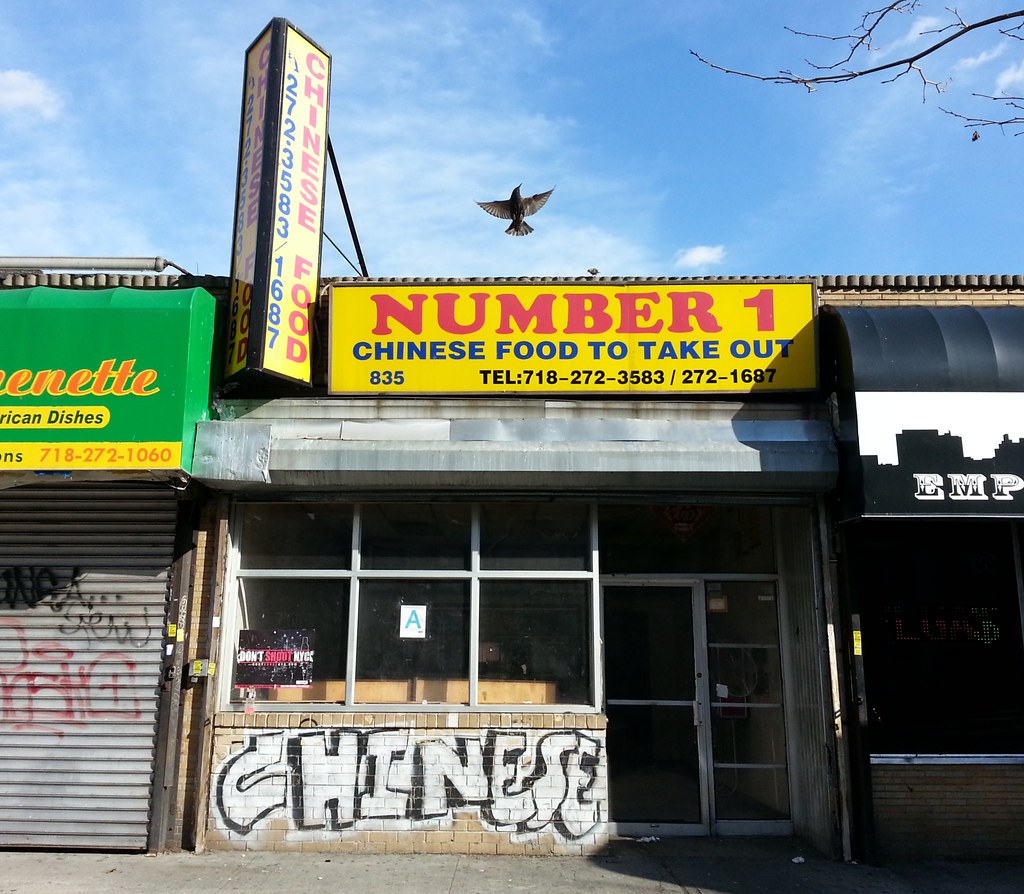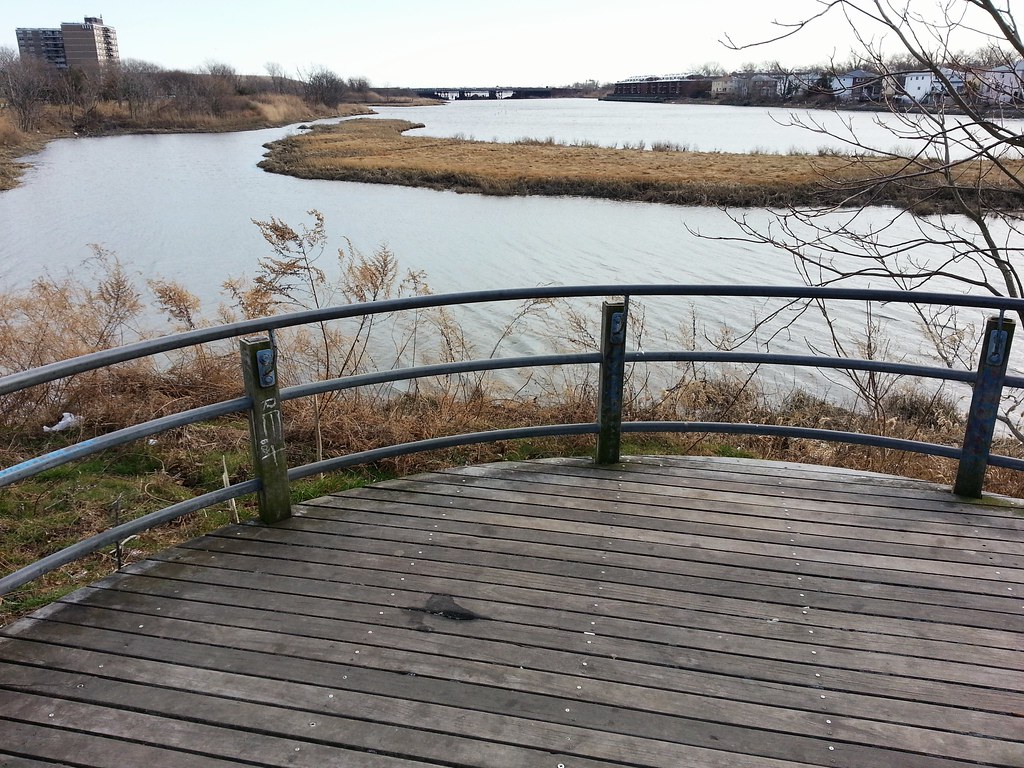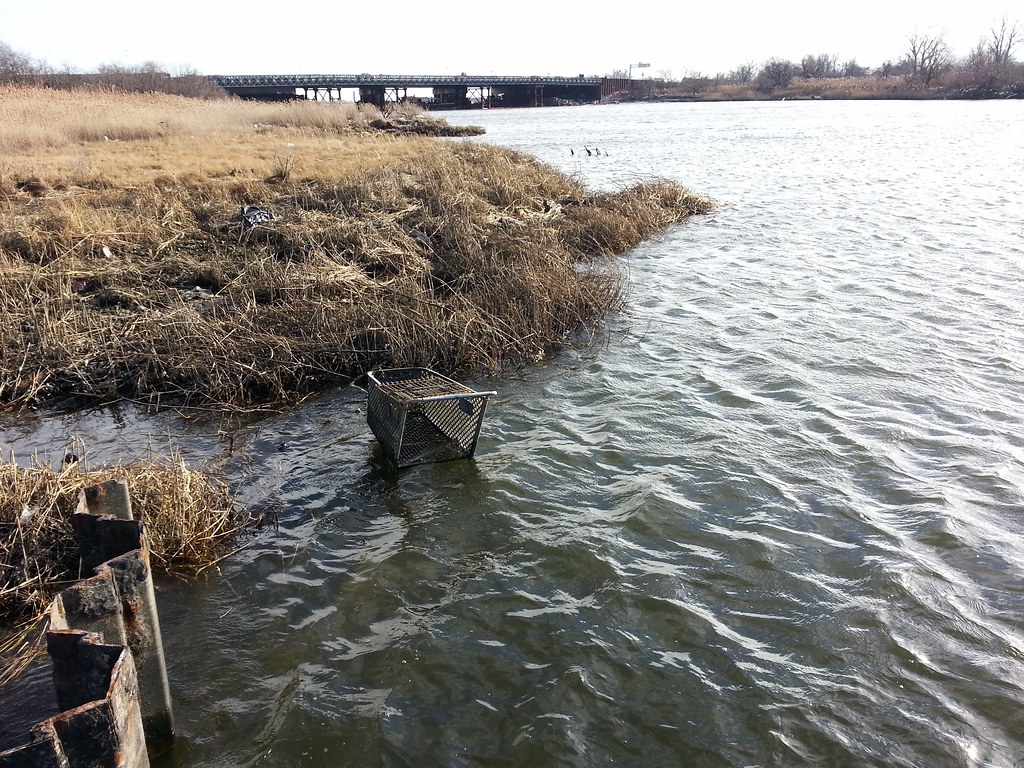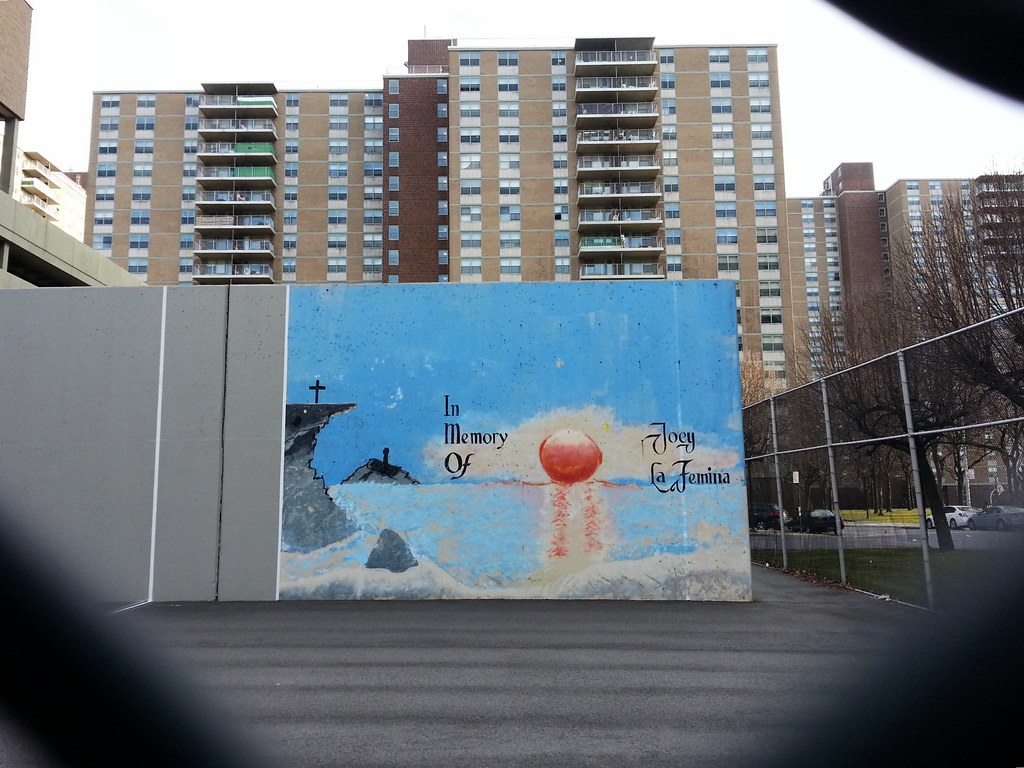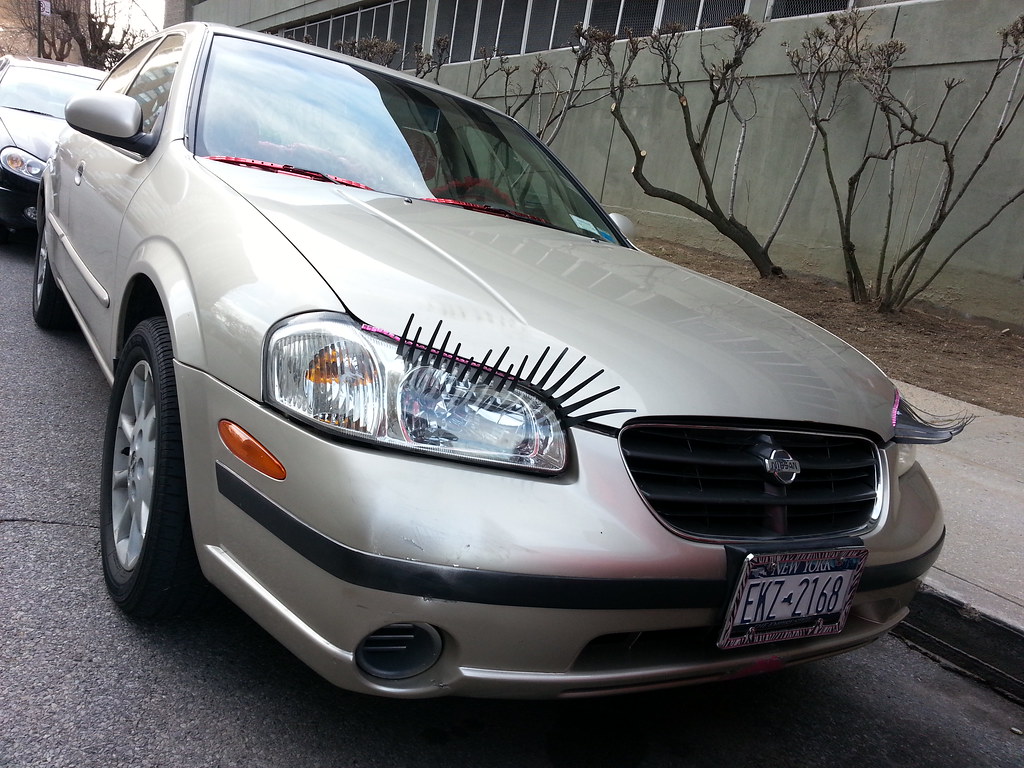
I'm standing in Queens, but that's Brooklyn on the other side. The border between the two boroughs is quite convoluted.
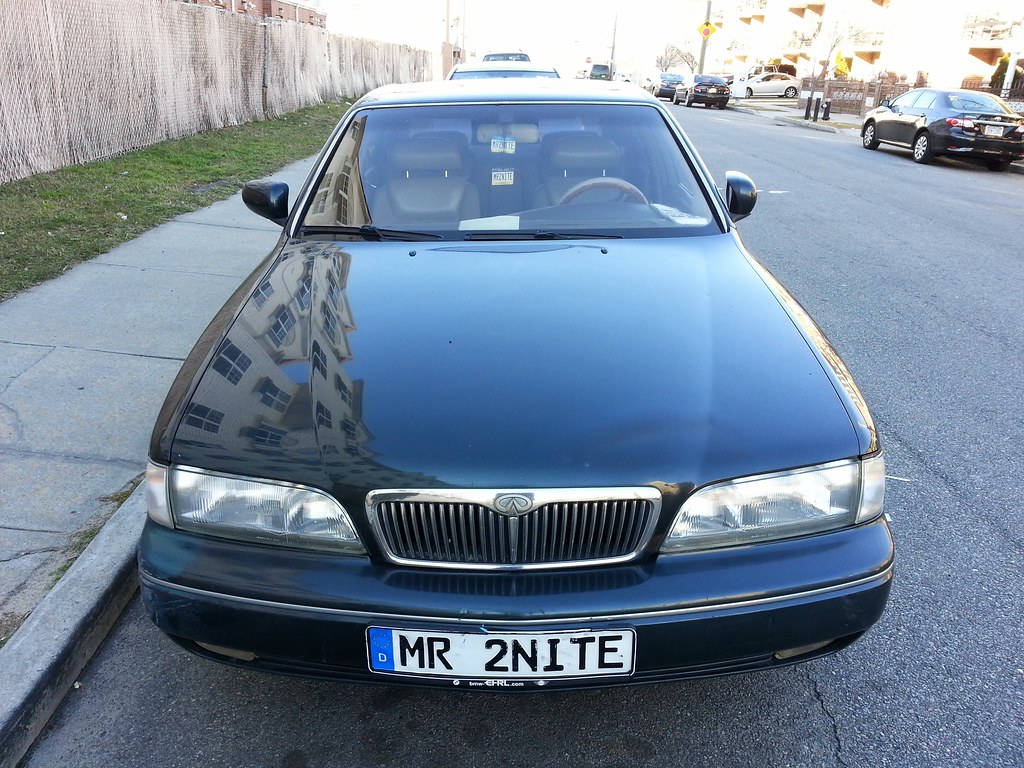
Plus two more hanging from the rear view. Now let's walk around back and see what his real license plate is.

I'm going to count all of these collectively as one memorial, so just consider this an extension of #94.

This street is a remnant of a once-major route that ran across southern Queens.
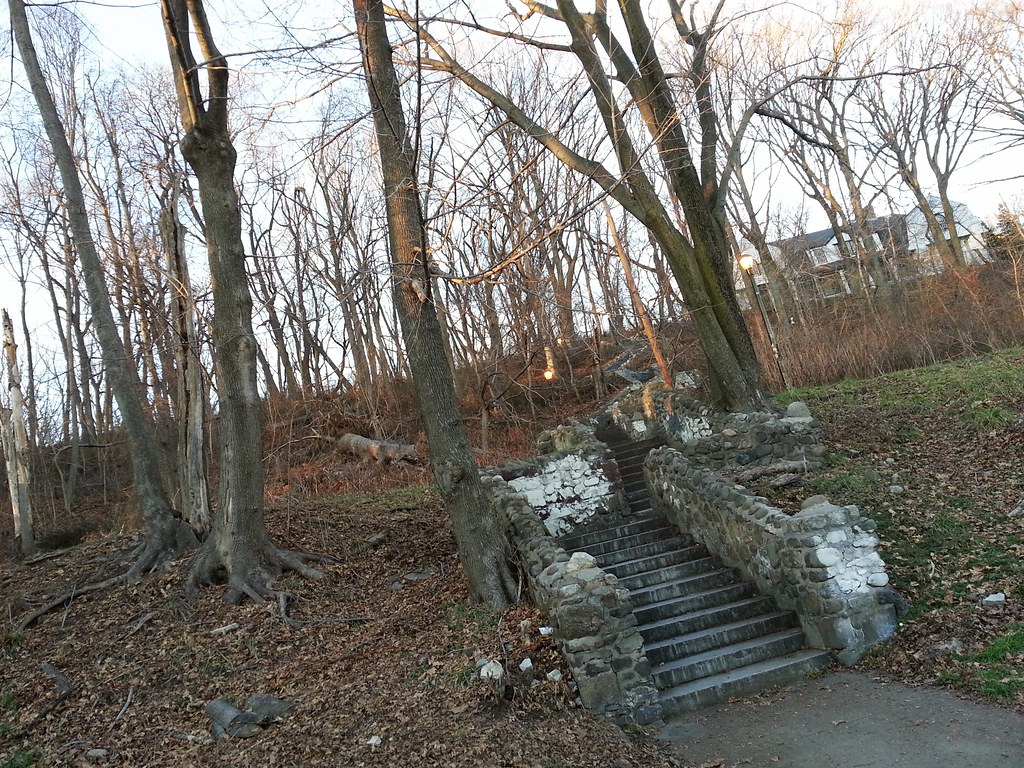
These stairs ascend to Oak Ridge, constructed in 1905 as the clubhouse for Forest Park's golf course. The building currently houses the park's administrative headquarters, the Queens Council for the Arts, and a community center. Here's a closer look at the place.

This installation fuses the classic style of a backboarded milk crate with the elegant not-running-into-the-wall-ness of a pole-mounted hoop.

An early supermarket built during the Depression by Fred Christ Trump

Vibrant translucency can be found in abundance on the J train's elevated station platforms. I took this shot at the Norwood Avenue stop; you can see some photos from the other stations on the MTA's surprisingly excellent Arts for Transit page.

This strange little alley leads to three dwellings tucked away inside the other houses on the block.

This piano showroom is a rare surviving piece of the old Lalance & Grosjean factory. According to the AIA Guide to New York City:
"Until most of the antique, red-painted brick structures were wasted in the mid 1980s to form yet another shopping center, this intricate array of 19th-century mill buildings was a remarkable relic of the era when the Village of Woodhaven claimed a nationally known tinware and agateware manufacture. Its products graced many an American kitchen for generations, and the Lalance & Grosjean factory employed hundreds."
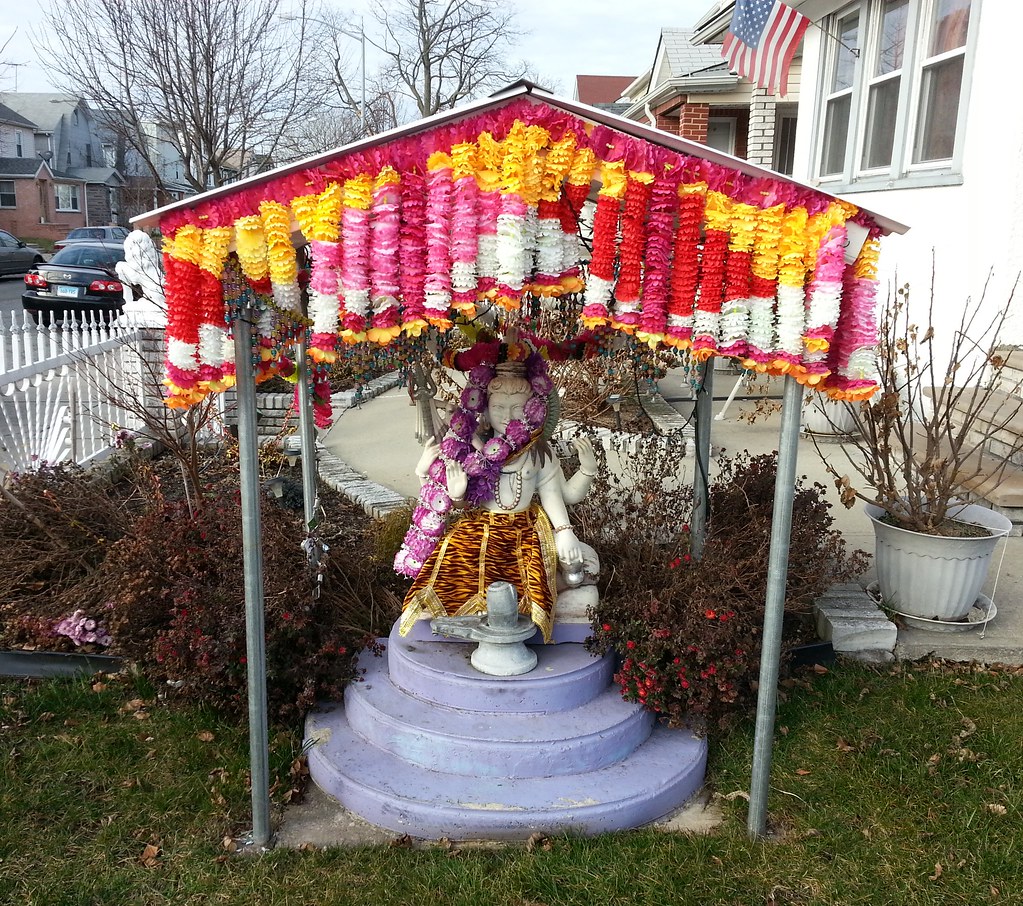
This Hindu god is represented not just by the statue, but also by the lingam placed in front of it.

This dead end north of the Lower Montauk Branch is lined with big ol' American sedans from the late '60s and early '70s. Plus one devilish-looking limo to boot.

for illegal dumping: a secluded spot between a warehouse and a lightly used rail line at the end of a dead-end street

Rubie's started out as a neighborhood candy shop in 1950, and it's since grown into a multinational costume manufacturer and retailer.

Pardon the dimly lit shot. Here's a better look. I count 15.
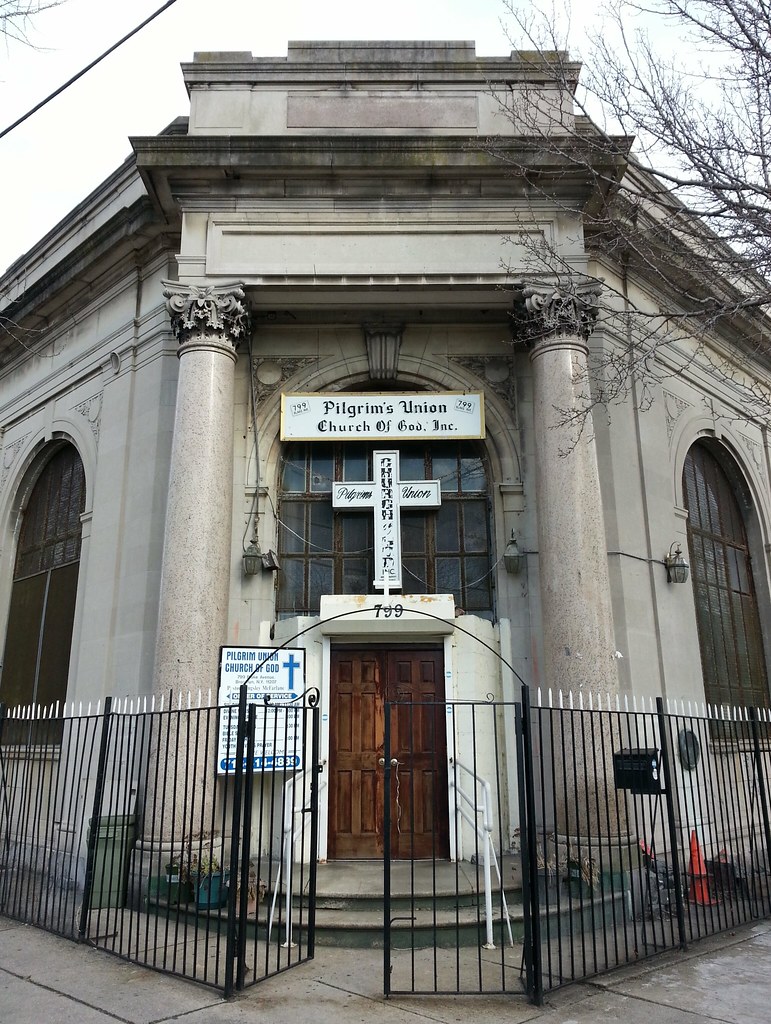
This building was originally a branch of The State Bank. One of the congregants told me that they still have the old vault inside; it's too big and too heavy to move.
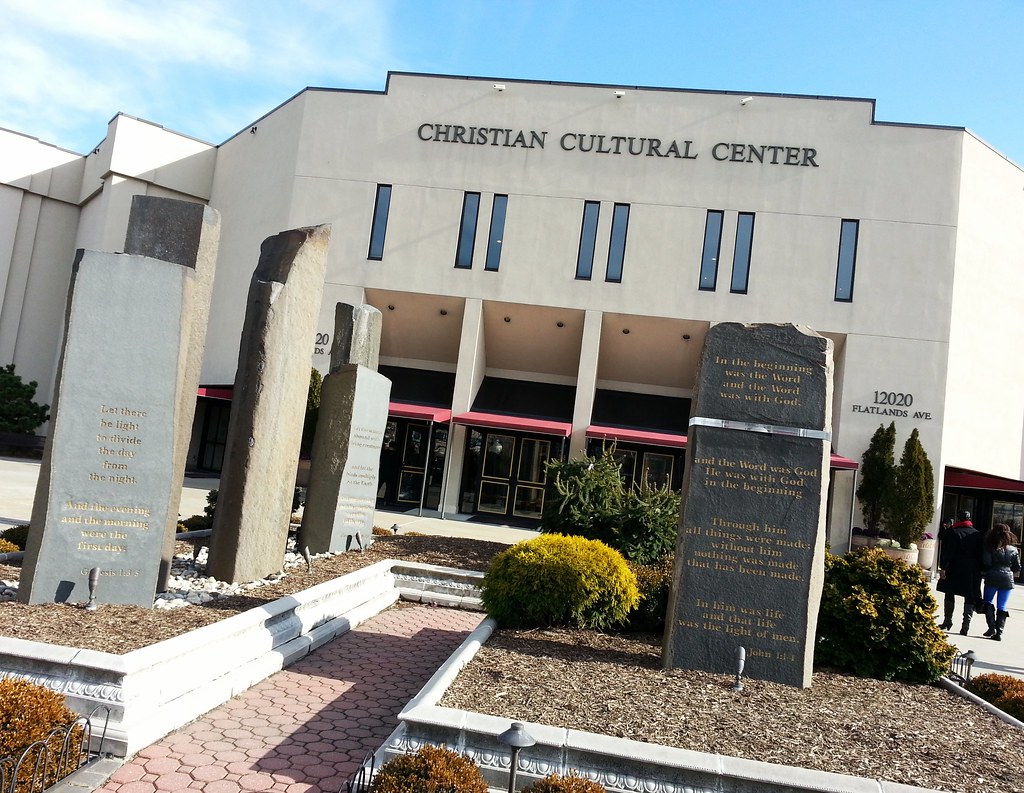
With more than 30,000 members, this "FedEx-fast, Disney-friendly" East New York megachurch has the largest congregation of any church in the city.

Officially called Spring Creek Towers since 2002, this massive (its population is upwards of 13,000) affordable housing development situated at the southern edge of East New York opened in 1974 as "an audacious work of social engineering" — a meticulously integrated community whose "planners carefully arranged families on each hallway, like chess pieces, to maintain the racial mix they considered most stable: 70 percent white to 30 percent black."
In the early days, unrented units reserved for white families remained empty even as the number of black families on the waiting list grew into the thousands. This ridiculous 1979 commercial for Starrett City, with its well-coiffed lead actor straight out of the country club (20 bucks says his wife's name was Muffy) and its very light smattering of on-screen minorities, must have been created specifically to attract more white tenants.
A lawsuit eventually forced Starrett to abandon its quota system in 1988. The racial percentages have shifted in the years since, but it's still a very diverse place: 53% black, 25% white, 18% Hispanic, 3% Asian, and 2% other, according to the 2010 census.

Hey, this looks familiar! The plant doesn't always work perfectly, of course, but it did allow Starrett City to maintain power during the famous blackouts of 1977 and 2003. According to the NY Post: "Starrett City in Brooklyn also has a plant that is not connected to the grid. When the city's lights went out in 1977, a famous news photo showed its windows glowing."

One World Trade Center, still under construction, can be spotted on the horizon.

